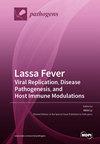Evaluation of the Reveal® AST (SPECIFIC) for Antimicrobial Susceptibility Testing from Positive Blood Culture Spiked with Carbapenem-Resistant Isolates
IF 3.3
3区 医学
Q2 MICROBIOLOGY
引用次数: 0
Abstract
As bloodstream infections and associated septic shock are common causes of mortality in hospitals, rapid antibiotic susceptibility testing (AST) performed directly on positive blood cultures is needed to implement an efficient therapy in clinical settings. We evaluated the Reveal® rapid AST system on a collection of 197 fully characterized carbapenem-resistant Enterobacterales, including 177 carbapenemase producers (CPE) spiked in blood culture bottles. The clinical categorization based on the Minimal Inhibitory Concentration (MIC) determination of eighteen antimicrobial molecules was compared to the clinical categorization based on the disk diffusion assay as a reference. The Reveal AST system provided results within a mean time to result of 5 h. Overall, the categorical agreement (CA) between the two techniques was 94.1%. The rates of very major errors (VMEs), major errors (MEs) and minor errors (mEs) were 3.8%, 3.7% and 5.6%, respectively. Imipenem was the antimicrobial with the lowest CA rate (78.7%), with rates of 15% VMEs and 10.7% MEs, but the performances were better when considering only the non-CPE category (CA of 89%). On this resistant collection of Enterobacterales with numerous acquired β-lactamases, the Specific Reveal assay proved to be useful for a rapid determination of AST compatible with a quick adaptation of the patient’s antimicrobial treatment.对 Reveal® AST (SPECIFIC) 进行评估,以检测加有耐碳青霉烯类抗生素菌株的阳性血培养物的抗菌药敏感性
由于血流感染和相关的脓毒性休克是医院中常见的致死原因,因此需要直接对阳性血培养物进行快速抗生素药敏试验 (AST),以便在临床环境中实施有效的治疗。我们对 Reveal® 快速 AST 系统进行了评估,该系统收集了 197 个完全特征化的耐碳青霉烯类肠杆菌,其中包括 177 个在血培养瓶中添加的碳青霉烯酶生产者 (CPE)。根据十八种抗菌分子的最小抑菌浓度 (MIC) 测定结果进行的临床分类与根据磁盘扩散分析法进行的临床分类进行了比较,作为参考。总体而言,两种技术的分类一致性(CA)为 94.1%。重大错误 (VME)、重大错误 (ME) 和轻微错误 (mE) 的发生率分别为 3.8%、3.7% 和 5.6%。亚胺培南是CA率最低的抗菌药物(78.7%),VMEs率为15%,MEs率为10.7%,但如果只考虑非CPE类别(CA率为89%),则表现更好。在这种具有大量获得性β-内酰胺酶的耐药肠杆菌中,Specific Reveal 检测法被证明可用于快速测定 AST,从而快速调整患者的抗菌治疗方案。
本文章由计算机程序翻译,如有差异,请以英文原文为准。
求助全文
约1分钟内获得全文
求助全文
来源期刊

Pathogens
Medicine-Immunology and Allergy
CiteScore
6.40
自引率
8.10%
发文量
1285
审稿时长
17.75 days
期刊介绍:
Pathogens (ISSN 2076-0817) publishes reviews, regular research papers and short notes on all aspects of pathogens and pathogen-host interactions. There is no restriction on the length of the papers. Our aim is to encourage scientists to publish their experimental and theoretical research in as much detail as possible. Full experimental and/or methodical details must be provided for research articles.
文献相关原料
| 公司名称 | 产品信息 | 采购帮参考价格 |
|---|
 求助内容:
求助内容: 应助结果提醒方式:
应助结果提醒方式:


